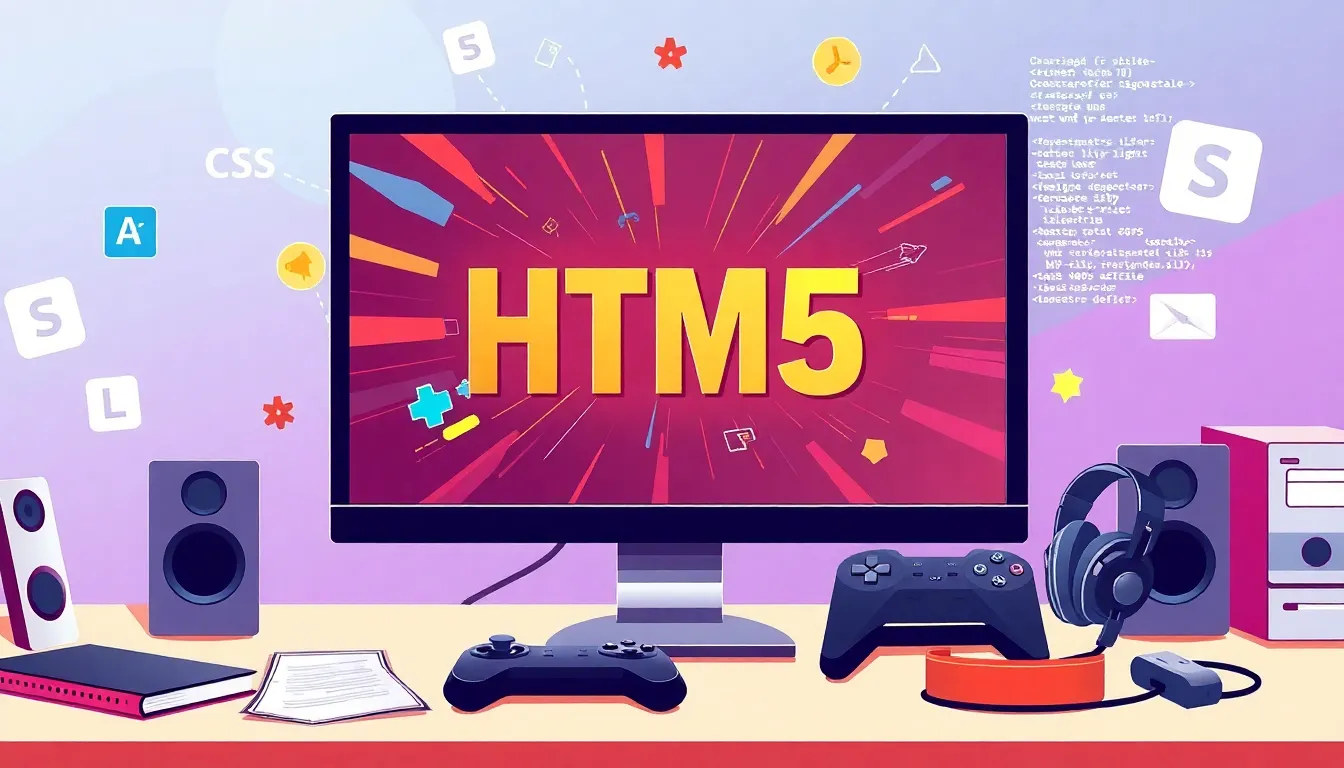In a world where mobile devices rule and attention spans are shorter than a cat video, HTML5 game development has emerged as the superhero of the gaming universe. It’s like the Swiss Army knife of game creation—versatile, powerful, and ready to save the day. Whether you’re a seasoned developer or just dipping your toes into the coding waters, HTML5 offers a playground where creativity knows no bounds.
Overview of HTML5 Game Development
HTML5 game development has gained significant traction in recent years. It offers broad compatibility across devices, enabling games to run seamlessly on desktops, tablets, and smartphones. Developers appreciate that HTML5 eliminates the need for third-party plugins, streamlining the development process.
The growing popularity of mobile gaming aligns with HTML5’s capabilities. Many players favor quick, casual games that fit their lifestyles. HTML5 provides tools for creating engaging, interactive experiences that captivate users within minutes.
Multiplayer gaming scenarios become attainable with HTML5. Built-in APIs facilitate real-time communication, allowing developers to integrate features like chat systems and online leaderboards. User interactions become dynamic and gratifying when players engage with others in real-time.
Frameworks and libraries enhance the development experience. Libraries like Phaser and Three.js simplify the coding process, allowing developers to focus on creativity rather than complex programming tasks. These resources enable the rapid creation of games that boast impressive graphics and smooth gameplay.
Browser support plays a crucial role in the appeal of HTML5. Most modern browsers handle HTML5 features well, ensuring broad accessibility. Players can enjoy games without worrying about installations or compatibility issues.
The future of HTML5 game development looks promising. Constant advancements in browser technology and HTML5 specifications pave the way for richer experiences. As the industry evolves, developers can expect even more robust tools and features to elevate their game creations.
Key Technologies Involved

HTML5 game development relies on several core technologies that enhance functionality and user experience. Each technology plays a crucial role in creating engaging and interactive games.
HTML5
HTML5 serves as the foundation for game development. Its semantic elements enable structured content, improving accessibility and SEO. Game developers use features like the <canvas> element for rendering graphics, audio support for immersive sound, and local storage for saving player progress. Versatility in deployment across multiple platforms stands out as one of its key advantages, minimizing compatibility issues.
CSS3
CSS3 significantly enhances the visual appeal of HTML5 games. Developers leverage styles and animations to create engaging user interfaces. Flexibility allows for responsive designs that adapt to various screen sizes, ensuring optimal gameplay. Transitions and transformations provide dynamic visual effects, enhancing the overall experience. Game aesthetics improve with careful use of background images, fonts, and colors.
JavaScript
JavaScript drives interactivity within HTML5 games. This scripting language handles game logic, player interactions, and real-time updates. Efficient event handling facilitates smooth gameplay mechanics, and the extensive ecosystem of libraries and frameworks, such as Phaser or Three.js, accelerates development. Performance optimization techniques ensure high frame rates across devices, improving the overall user experience.
Benefits of HTML5 Game Development
HTML5 game development offers distinct advantages that appeal to developers and players alike. Its broad compatibility across various devices stands out as a key benefit.
Cross-Platform Compatibility
Cross-platform compatibility ensures games play seamlessly on desktops, tablets, and smartphones. Players access games through web browsers, eliminating the need for downloads or specific operating systems. Developers create a single build, reaching a wider audience with minimal effort. Modern browsers like Chrome, Firefox, and Safari support HTML5 features, enhancing user experience. This compatibility leads to increased player engagement as individuals can easily switch devices without losing progress. Developers maximize their reach with HTML5, catering to players who increasingly prefer mobile gaming.
Cost-Effectiveness
Cost-effectiveness plays a significant role in HTML5 game development. Developers save resources by using a unified codebase rather than creating separate versions for different platforms. Reduced development time lowers labor costs and accelerates the launch process. Furthermore, HTML5 eliminates reliance on third-party plugins, simplifying the development cycle. Game maintenance becomes easier due to the centralized architecture, allowing developers to implement updates quickly. A strong community of developers offers free resources and libraries, further minimizing expenses. Overall, HTML5 enables developers to create high-quality games without incurring significant financial burdens.
Popular HTML5 Game Engines
Multiple HTML5 game engines facilitate the creation of engaging games. These engines support diverse features, enhancing developers’ capabilities.
Phaser
Phaser stands out as a popular framework for building 2D games. This versatile engine allows for rapid development with a robust suite of tools and features. Developers benefit from its comprehensive documentation and active community, which simplifies problem-solving. Phaser supports various input methods, enabling touch and keyboard interactions seamlessly. With baked-in physics and customizable rendering capabilities, it allows designers to create visually stunning games. Its lightweight architecture ensures quick load times, fostering better user experience. An extensive library of plugins enhances functionality further, streamlining the addition of complex features.
Construct
Construct provides a powerful platform for game creation without extensive programming knowledge. Drag-and-drop functionality makes it accessible for newcomers. Users can build games visually, enabling quick prototypes and iterations. Built-in behaviors streamline common game mechanics, reducing development time. Construct focuses on 2D game design, offering comprehensive tools for sprite animation and level design. Cloud saving features enable developers to share projects easily and collaborate with others. Moreover, its export options support multiple platforms, ensuring wide accessibility for players across devices. The active user community contributes to a rich resource of tutorials and assets, enhancing the development experience.
Best Practices for Developing HTML5 Games
Developing engaging HTML5 games requires adherence to certain best practices. These practices enhance both performance and user experience.
Performance Optimization
Optimizing performance enhances gameplay quality. Developers should minimize file sizes by compressing images and utilizing sprite sheets. Leveraging the
User Experience Design
User experience design ensures players remain engaged. Focusing on intuitive controls makes gameplay accessible. Providing feedback through sounds and visual cues enhances interaction. Incorporating a clean layout helps guide players without overwhelming them. Responsive design adapts to different screen sizes, maintaining playability on desktops and mobile devices. Additionally, implementing onboarding tutorials familiarize new players with mechanics. Thoughtfully organized menus streamline navigation, allowing users to jump into the action seamlessly. Regularly collecting player feedback informs iterative design improvements and keeps the game aligned with user preferences.
Conclusion
HTML5 game development stands at the forefront of the gaming industry, offering unmatched versatility and accessibility. Its ability to cater to various devices without the need for plugins makes it an ideal choice for both developers and players. With frameworks like Phaser and Construct, creating engaging games has never been easier or more efficient.
As technology continues to evolve, HTML5 is poised to deliver even more immersive experiences. By adhering to best practices and focusing on user experience, developers can create captivating games that resonate with a broad audience. The future of HTML5 game development looks bright, promising endless possibilities for creativity and innovation in the gaming landscape.



